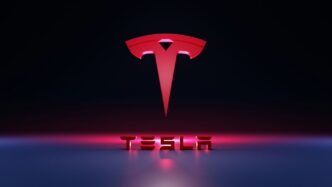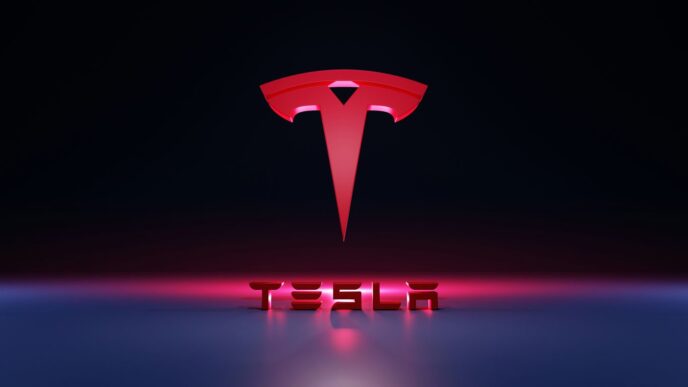Driving Innovation In Intelligent Transport Systems Europe
Europe’s transport system is really changing, and a big part of that is Intelligent Transport Systems, or ITS. It’s not just about faster cars anymore; it’s about making everything work together better, smarter, and cleaner. We’re seeing a lot of new ideas pop up, and it’s pretty exciting to think about where this is all heading.
Connectivity And Digitalization Advancements
Think about your phone – how much it’s changed things, right? Well, the same kind of digital revolution is happening with our roads and vehicles. We’re talking about cars that can talk to each other and to the road itself. This means fewer accidents because cars can warn each other about hazards or sudden stops. It also means traffic lights can adjust in real-time based on how many cars are actually there, not just on a timer.
- Vehicle-to-Everything (V2X) Communication: This is the big one. Cars sending and receiving data about speed, location, and road conditions. It’s like giving every vehicle a heads-up about what’s coming.
- Data Analytics: All this information being collected needs to be sorted. Companies are getting really good at looking at traffic patterns to figure out the best ways to move people and goods.
- Digital Twins: Imagine a virtual copy of a city’s transport network. This lets planners test out new ideas, like a new bus route or traffic management system, without actually messing with real traffic.
Automation’s Role In Future Mobility
Self-driving cars are probably the first thing that comes to mind, and yeah, that’s a huge part of it. But automation in ITS goes way beyond just taking the steering wheel out of your hands. It’s about making the whole system more efficient and safer.
We’re seeing automated trucks on highways, which could help with driver shortages and make long-haul trips more consistent. Then there are automated systems for managing parking or even cleaning roads. The goal is to reduce human error, which is a major cause of accidents.
Urban Mobility Solutions For Smarter Cities
Cities are getting crowded, and getting around can be a real headache. ITS is stepping in to help. Instead of just building more roads, we’re looking at smarter ways to use what we have.
- Integrated Public Transport: Imagine one app that shows you all the bus, train, and tram schedules, lets you buy a ticket, and even suggests the fastest route combining different modes.
- Smart Parking Systems: Apps that tell you where an empty parking spot is, so you don’t have to circle the block for ages.
- Demand-Responsive Transport: Services, like smaller buses or vans, that change their routes based on where people actually need to go, especially in less busy areas or at off-peak times.
These changes aren’t just about convenience; they’re about making our cities more livable and reducing pollution. It’s a big shift, and Europe is definitely at the forefront of making it happen.
Transforming Europe’s Transport Landscape

Key Trends Shaping Intelligent Transport Systems
Europe’s approach to transport is really changing, and it’s not just about faster trains or more electric cars. It’s about how we connect everything. Think about it: your car talking to traffic lights, or public transport apps giving you real-time updates that actually work. This whole interconnectedness is a big deal. We’re seeing a major shift towards systems that are not just smart, but also adaptable.
Here are some of the main things driving this change:
- Digitalization: This is the backbone. Everything from data collection on roads to how we manage traffic flow is going digital. It means more information, and hopefully, better decisions.
- Connectivity: Vehicles talking to each other (V2V) and to infrastructure (V2I) is becoming more common. This helps prevent accidents and smooths out traffic jams.
- Automation: Self-driving features are slowly making their way into more vehicles. While fully autonomous cars are still a way off for most people, the tech is here and it’s changing how we think about driving.
- Data Analytics: We’re collecting tons of data from all these connected systems. Figuring out what to do with it all is key to making transport more efficient and user-friendly.
Policy And Decision-Making In ITS
Making all these smart transport ideas a reality isn’t just about the tech itself. It needs smart rules and good planning. Governments and transport authorities across Europe are working on this, trying to keep up with the rapid changes. It’s a balancing act, for sure. They need to encourage new ideas without creating chaos or leaving people behind.
Here’s a look at what’s involved:
- Setting Standards: For all these connected systems to work together, they need to speak the same language. This means agreeing on common technical standards so your car from one brand can communicate with a traffic light from another.
- Funding and Investment: New technologies cost money. Deciding where to invest public funds, and how to encourage private companies to invest too, is a constant challenge.
- Regulation: Rules are needed for things like data privacy, safety of automated systems, and how to manage new types of mobility services.
- Public Engagement: Getting people on board is important. If folks don’t trust the technology or understand how it benefits them, adoption will be slow.
Building Sustainable Transport For Tomorrow
Nobody wants more pollution or traffic jams. The push for smarter transport systems is also a big part of making European mobility greener. It’s not just about electric vehicles, though they are a piece of the puzzle. It’s about using technology to make the whole system more efficient, which in turn reduces its environmental impact.
Think about these points:
- Optimized Traffic Flow: When traffic moves more smoothly, cars use less fuel and produce fewer emissions. Smart traffic management systems can help achieve this.
- Promoting Public and Shared Transport: ITS can make public transport more attractive and easier to use, encouraging people to leave their cars at home. Shared mobility services, like car-sharing or bike-sharing, also play a role.
- Efficient Logistics: For goods transport, smarter routing and scheduling can cut down on unnecessary miles driven by trucks, saving fuel and reducing pollution.
- Integration of Renewables: ITS can help manage the charging of electric vehicles, potentially integrating with renewable energy sources to make the entire process cleaner.
Breakthrough Innovations In Intelligent Transport Systems Europe

Exploring New Technologies In Mobility
Europe’s transport scene is buzzing with new ideas, and it’s pretty exciting to see. We’re talking about tech that’s not just a little bit better, but genuinely different. Think about how cars are starting to talk to each other and to the road itself. This isn’t science fiction anymore; it’s becoming a reality. These systems can warn drivers about hazards way before they see them, like a sudden stop ahead or icy patches. It’s all about making journeys safer and smoother.
Another big area is how we manage traffic. Instead of just reacting to jams, we’re seeing systems that can predict them. By looking at real-time data from vehicles, sensors, and even social media, traffic lights can adjust automatically. This means less time stuck in traffic and less pollution. It’s a smart way to keep cities moving.
The Impact Of Digitalization On Transport
Digitalization is really changing the game. It’s not just about having apps on your phone, though those are part of it. It’s about creating a whole digital layer over our transport networks. This allows for things like:
- Real-time tracking: Knowing exactly where your bus or train is, and when it will arrive.
- Integrated ticketing: Using one app or card for all your travel, from buses to trains to bike shares.
- Data analysis: Using all the information gathered to plan better routes and services.
This constant flow of information is what makes everything smarter. It helps operators make better decisions and gives travelers more control and predictability. It’s like giving the entire transport system a brain that can think ahead.
Sustainable Solutions For European Transport
When we talk about innovation, sustainability has to be front and center. A lot of the new tech is aimed at making transport greener. For example, smart charging for electric vehicles is a big one. Instead of everyone plugging in at the same time, which can strain the power grid, systems can manage charging to happen when electricity is cheaper or greener (like when there’s a lot of solar power). This helps reduce our carbon footprint.
We’re also seeing more focus on shared mobility. Digital platforms make it easier to find and use shared bikes, scooters, and cars. This can reduce the number of private vehicles on the road, especially in cities. It’s a step towards cleaner air and less crowded streets. The goal is to make getting around easier without costing the earth.
The Evolving Ecosystem Of Intelligent Transport Systems Europe
Convergence Of Mobility, Technology, And Policy
It’s pretty interesting how everything in transport is starting to blend together these days. You’ve got the actual movement of people and goods, then all the tech that makes it happen, and then the rules and plans that guide it all. They’re not really separate things anymore, are they? It feels like they all have to work hand-in-hand for anything to really move forward. Think about it: new self-driving cars (that’s the tech) need clear rules about where they can go and how they interact with other vehicles (that’s the policy), all to make getting around easier and faster (that’s the mobility part).
Accessing Breakthrough Innovations
So, how do you actually find out about all these new ideas? Well, events like the ITS European Congress are a big deal. They’re like a central hub where you can see the latest gadgets and software. It’s not just about looking, though. You get to talk to the people who are actually making these things and the folks who decide how they get used. It’s a good way to get a feel for what’s coming next.
Here’s a quick look at what you might find:
- Connectivity: Better ways for cars, roads, and traffic lights to talk to each other.
- Automation: Progress in self-driving tech and how it fits into the bigger picture.
- Data Analytics: Using information to make traffic flow smoother and transport more efficient.
- User Experience: Making it easier for everyone to use these new systems.
Influential Decision-Makers In ITS
It’s not just about the tech itself, but who’s making the calls. You’ve got government folks, city planners, big tech companies, and even car manufacturers all at the table. They’re the ones who decide what gets funded, what gets built, and what rules we all have to follow. Getting them all on the same page is probably the hardest part of the whole puzzle. Their decisions shape the future of how we all get around.
Future-Proofing European Mobility With ITS
Making sure Europe’s transport systems can handle what’s coming next is a big job. Intelligent Transport Systems (ITS) are key to this. It’s all about using smart tech to make travel smoother, safer, and better for the environment. We’re talking about systems that talk to each other, vehicles that can drive themselves, and cities that manage traffic flow like a well-oiled machine.
Smart Mobility Strategies For Europe
Europe is looking at a few big ideas to get ahead. One is making sure all our transport tech can connect and share information. Think about traffic lights that adjust based on real-time traffic, or apps that tell you the best way to get somewhere using a mix of public transport and ride-sharing. It’s about making choices easier for travelers and reducing congestion. Another part is making sure these systems are built to last, adapting as new technologies pop up. We need plans that aren’t just for today, but for the next decade and beyond.
Integrating Automation In Transport Networks
Self-driving cars and trucks are no longer science fiction. Integrating these automated vehicles into our current roads and highways is a huge step. This means more than just the cars themselves; it involves updating road signs, creating clear digital maps, and setting up communication networks so vehicles can ‘talk’ to each other and to the infrastructure.
Here’s a quick look at what’s involved:
- Vehicle-to-Everything (V2X) Communication: Cars sending signals to other cars, traffic lights, and even pedestrians’ phones.
- Advanced Driver-Assistance Systems (ADAS): Features like adaptive cruise control and lane keeping assist are just the start.
- Autonomous Driving Levels: Understanding the different stages of automation, from driver assistance to full self-driving.
The goal is to reduce accidents caused by human error and improve traffic flow.
Enhancing Urban Connectivity
Cities are where a lot of the traffic happens, so making urban mobility smarter is a priority. This involves connecting different transport modes – buses, trains, trams, bikes, and even scooters – so people can switch between them easily. It also means using data to manage parking, optimize public transport routes, and make sure emergency services can get through traffic quickly. Think of a city where your journey is planned from start to finish, with real-time updates and easy payment options, all managed through a single app. It’s about making city life easier and more sustainable for everyone.
Looking Ahead
So, what’s next for smart transport in Europe? It’s clear things are moving fast. We’re seeing a lot of new ideas pop up, especially around how cars talk to each other and the roads, and how cities can manage traffic better. It’s not just about the tech, though. Governments and companies are working together to make sure these changes actually help people get around more easily and safely, while also being kinder to the planet. The ITS European Congress, for example, is a place where all these different pieces come together – the new gadgets, the people making the rules, and the folks who actually use the roads. It’s all about building a transport system that works for everyone, now and in the future. It’s an exciting time to watch it all unfold.














